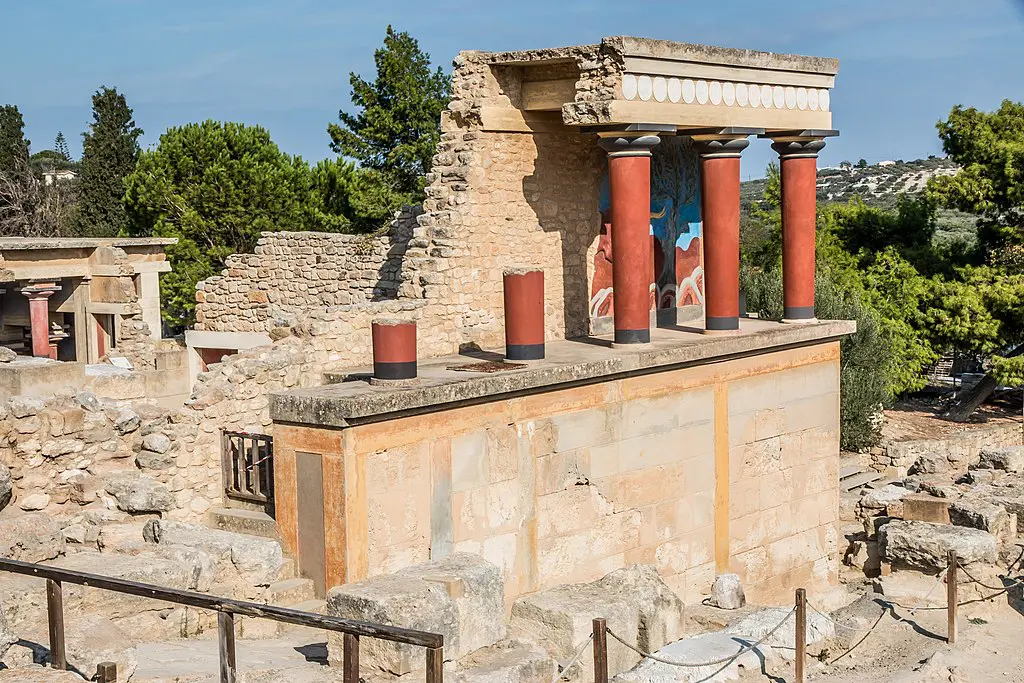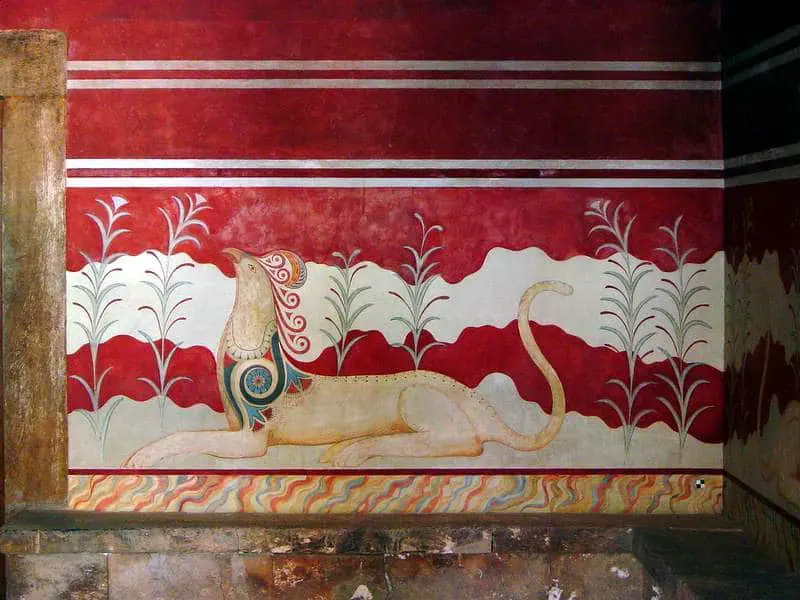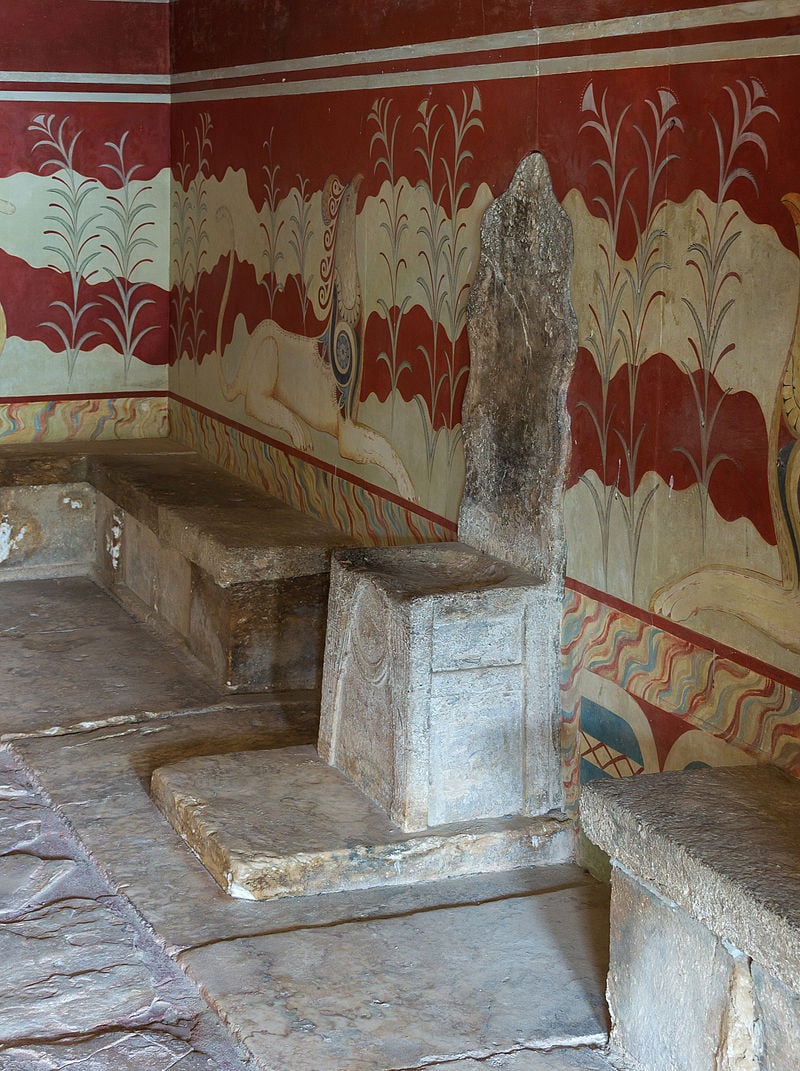
The magnificent throne room of the Knossos Palace is believed to be the oldest throne room in Europe
The Minoan civilization, a flourishing Bronze Age culture, thrived on the island of Crete between 2700 BC and 1450 BC. Among the remarkable remnants of this civilization is the Knossos Palace, a sprawling complex that once served as the center of Minoan power. Within the palace lies the throne room, a captivating chamber that is believed to be the oldest throne room in Europe.
The palace boasts a multi-level structure with a labyrinthine layout, showcasing the advanced architectural prowess of the Minoans. It encompasses living quarters for the king and queen, storage areas, workshops, and spaces dedicated to religious ceremonies.
The impressive Knossos complex included massive royal buildings, extensive workshop installations, a luxury rock-cut grotto, and tholos tombs.

The throne room is situated at the heart of the Knossos Palace. It features a gypsum bench on three sides, with a plaster throne positioned against the north wall. This elevated seat, adorned with griffin reliefs, is believed to have been used by the Minoan ruler for both administrative and ceremonial purposes.
The throne room was unearthed in 1900 by British archaeologist Arthur Evans during the first phase of his excavations in Knossos.
In the heart of the Knossos Palace, west of the central court, lies a fascinating chamber. A seat of alabaster rests on the north wall, declared a “throne” by archaeologist Evans. Two majestic griffins, guardians without wings, flank this seat, their gaze fixed as if in reverence.

These griffins, mythical blends of lion and eagle, symbolize both earthly power and the divine. However, their lack of wings is a curious detail. Evans envisioned this as the seat of the legendary King Minos, but other theories abound.

Some archaeologists propose it was a sacred space for a female deity, with a priestess acting as her earthly representative. The prevailing view, however, leans towards a more religious purpose. The imagery on the walls – griffins, palms, and altars – suggests rituals involving a High Priestess. A recent theory even proposes the room was used solely for dawn ceremonies during specific times of the year.
Adding to the mystery is the dating of the room and its furnishings. Some argue they belong to the Mycenaean takeover around 1450 BC. This theory points to a shift in Crete’s political climate, evidenced by elite tombs, individual burials, and the appearance of Mycenaean script (Linear B).
Cover Photo: Olaf Tausch/Wikimedia Commons/CC BY 3.0
Greek Reporter article was used
You may also like
- A 1700-year-old statue of Pan unearthed during the excavations at Polyeuktos in İstanbul
- The granary was found in the ancient city of Sebaste, founded by the first Roman emperor Augustus
- Donalar Kale Kapı Rock Tomb or Donalar Rock Tomb
- Theater emerges as works continue in ancient city of Perinthos
- Urartian King Argishti’s bronze shield revealed the name of an unknown country
- The religious center of Lycia, the ancient city of Letoon
- Who were the Luwians?
- A new study brings a fresh perspective on the Anatolian origin of the Indo-European languages
- Perhaps the oldest thermal treatment center in the world, which has been in continuous use for 2000 years -Basilica Therma Roman Bath or King’s Daughter-
- The largest synagogue of the ancient world, located in the ancient city of Sardis, is being restored











Leave a Reply